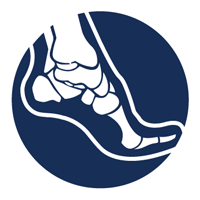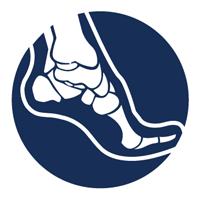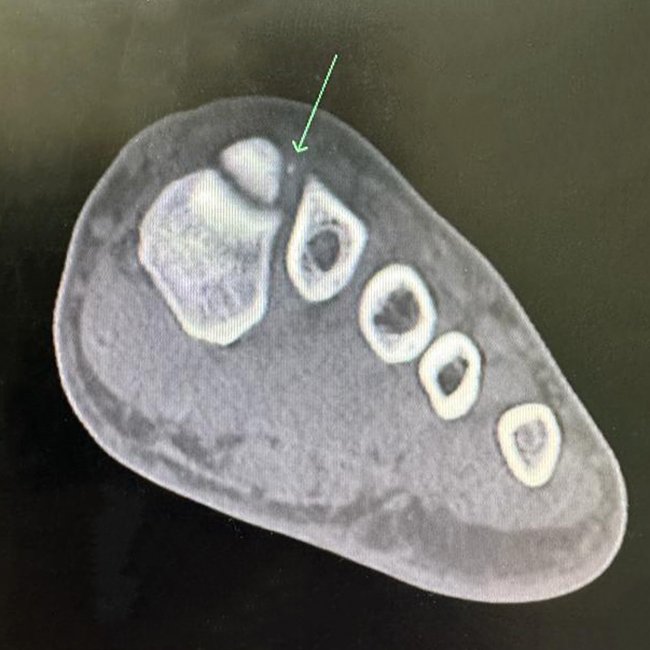Lisfranc Injury Surgery at Norwest Private Hospital Sydney
Lisfranc Injury Surgery for treatment of midfoot fractures.
Unfortunately, some injuries are more than a simple sprain. An injury to the midfoot can sometimes been overlooked. Lisfranc injuries range from mild to severe and if not treated, can adversely affect the long-term health and function of the foot.
Lisfranc injury surgery aims to correct the position and placement of the vital structures of the midfoot and avoid long-term issues such as arthritis or walking issues.
What is Lisfranc Injury Surgery?
Lisfranc injuries or midfoot injuries may be overlooked as a simple sprain that will heal over a few days. However, if not diagnosed and treated properly, Lisfranc injuries may lead to serious long-term health effects such as arthritis or issues walking.
Lisfranc injuries vary in severity from mild to severe. In cases where the joints are not affected by abnormal positioning and there are no fractures of the midfoot bones, non-surgical treatments such as a cast or boot may be used to manage the midfoot injury.
However, if there is abnormal positioning of the joints of the midfoot together with fractures of the bones and completely torn ligaments, then surgical options are recommended to treat Lisfranc or midfoot injuries.
You should seek professional medical advice if you suspect you have sustained a Lisfranc injury.
How is Lisfranc Injury Surgery performed?
Lisfranc surgery aims to realign the bones of the midfoot joints and/or repair damaged ligaments that usually hold the midfoot bones together. The surgery is usually done under general anaesthesia and the surgeon will make incisions on the top face of the foot.
The two most common techniques used to surgically repair Lisfranc injuries are open reduction and internal fixation (ORIF) and fusion.
In internal fixation (ORIF), the orthopaedic specialist surgeon will restore the position of the joints and bones by using medical-grade metal screws and plates. These screws and plates remain in place until the bones and ligaments heal and gain enough strength to hold the midfoot in its proper position. They can then be removed about 3-5 months after the surgery is complete.
If the joints of the midfoot are severely damaged and cannot be repaired, surgery for midfoot injuries involves fusing the bones together. The goal of this surgery is to fuse the bones together, so they heal in as a single structure.
What are some risks and complications of Lisfranc Injury surgery?
Before undergoing any surgery, an orthopaedic specialist surgeon will discuss risks and potential complications with you and answer any questions you might have.
Some risks include:
Wound infection: this occurs in less than 1% of all procedures and can be treated with antibiotics
Nerve damage: there is a small risk to losing sensation of the skin in area surrounding the surgical site, but this is very rare.
Blood clots: with any surgical procedure, there is a small risk of the blood clotting in the vessels causing pain and swelling. If you have known risk factors associated blood clots, the specialist may prescribe you with some blood-thinners during the recovery period. The risks are present but small. If you experience abnormal swelling and pain of the leg, please contact the specialist urgently.
Hardware failure: as with weight-bearing hardware, the metal screws and plates used to hold the midfoot joint together can fail after repeated stress. In most cases, failure of the metal screws or plates do not affect the surgery’s effect in keeping the joints in their proper place. However, you should attend the follow-up appointments consistently to ensure that the hardware remains in place.
How much does it cost to have Lisfranc Injury surgery?
The costs to have Lisfranc Injury surgery in Sydney depends on each individual treatment plan. Costs will depend on the treatment outcomes and complexity of the case presented. We provide full costs disclosure before initiating any treatments and therapies.
We accept most major private health insurance funding, and our knowledgeable staff can assist you with the health insurance claims process, but it is always helpful to contact your provider in advance to ensure that your insurance covers the orthopaedic procedure.
In most cases, you may be expected to pay a gap fee, but this is dependent on the cover of your private health insurance.
Associate Professor Roderick Kuo works only in the private health system and unfortunately does not maintain a public system list. However, some conditions may be treated with non-surgical methods such as physiotherapy that can be initiated after a consultation and review of your circumstances.
Here’s what to do next…
Research your condition and treatment options
We provide extensive information about Lisfranc Injuries on our conditions page.
Read our FAQ about Lisfranc Injury Surgery below.
Do further research and contact us with any questions you may have.
Book a consultation with Associate Professor Roderick Kuo
Prior to your appointment, please obtain a referral from your General Practitioner. This will allow you to claim a Medicare rebate on the consultation fees.
Call or email our team at Specialty Orthopaedics to book your consultation.
Frequently Asked Questions about Lisfranc Injury Surgery
-
Lisfranc injury surgery is an open-type surgery which requires the orthopaedic specialist surgeon to make incisions on the outside of the foot to access the damaged joint. You can expect to remain in hospital for about 1-2 days after surgery.
-
Prior to surgery, you will be given general anaesthesia and a local injection around the foot area, so you remain pain-free during and after the surgery. During the recovery period, you may be prescribed some stronger painkillers to reduce any discomforts. In the recovery and rehabilitation period, you may experience some discomforts, but this can be managed with painkillers.
-
After the surgery is complete, your foot will be placed in cast. Afterwards you will be sent to the recovery unit and monitored for a period of time to allow the general anaesthesia to wear off and your body vitals to normalise. It is important at this time to report any discomfort, pain, or nausea you may have to the doctors as they can assess your need for painkillers or anti-nausea drugs when you are discharged.
You will be referred to a physiotherapist who will start you on a recovery programme. It is recommended that you follow the guidance of the physiotherapy programme as it will speed up your recovery drastically and allow you to get back on your feet sooner.
-
In the first week after the surgery, you should attempt to minimalize moving around unless necessary. You should avoid weight-bearing on the operated foot and use non weight bearing mobility aids such as a knee scooter or crutches to move around.
Attempt to elevate your foot to the level of your heart to reduce swelling and take painkillers whenever you experience pain.
You may find some blood ooze at the site of the surgery which is normal. However, if you notice bleeding does not stop, please contact the specialist urgently.
-
Lisfranc injuries takes more time to heal than most foot procedures. You should allow up to 6 to 8 weeks before attempting to weight-bear on the operated. This is to ensure that the joints have time to heal and are kept in their proper place. Avoid all high-impact activities such as jumping or running until at least 3-5 months after surgery. Consult your orthopaedic specialist surgeon before attempting to weight-bear on the operated foot.
-
Healing and recovery times are different for each individual person. In general, you should be able to return to work in 2-4 weeks if you mostly sit at work. You should allow for up to 12-24 weeks to recover if your work involves manual labour.
-
The typical follow-up appoints after you have been discharged is as following:
10-14 days after surgery
At the first appointment, the orthopaedic specialist surgeon will remove your cast or boot and remove the sutures.
Six weeks after surgery
At this appointment, you will undergo an X-ray of your foot. Your cast or boot will be removed at this appointment and you may be able to weight-bear
Three months after surgery
Your progress will be evaluated at this appointment. You will undergo a weight-bearing X-ray, your foot will be examined, and the orthopaedic specialist surgeon may see how you are progressing with your posture and walking gait.
Six to twelve months after surgery
This is the final appointment, your progress will be evaluated and if all is well, you will be discharged.
Important: Information is provided for guidance only. Individual circumstances may differ and the best way to approach a condition is by individual medical consultation where a specialist can tailor a treatment plan to suit your needs.
Edited by Dr Roderick Kuo
Last updated: 5/5/24







